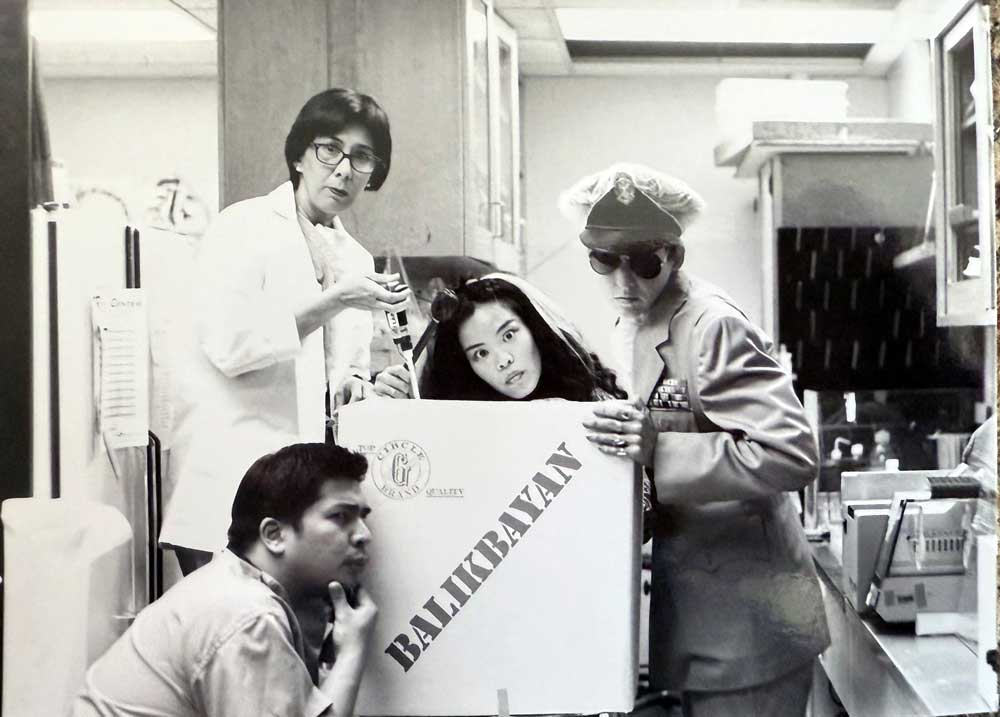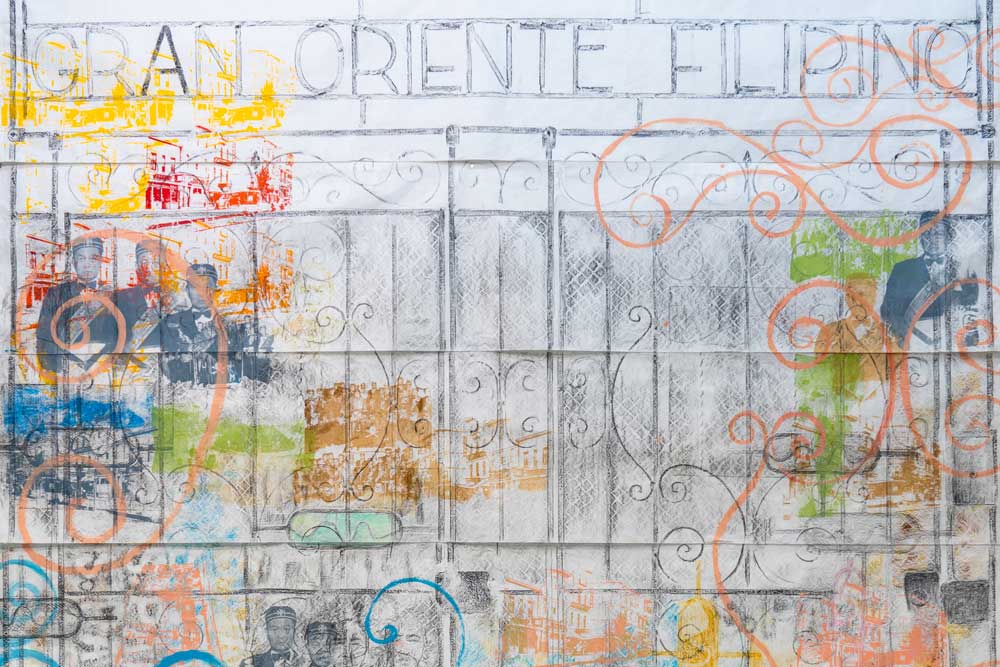DIWA Arts was a Bay Area coalition of Pilipino-American Artists, video makers, educators, and performers. Since 1986, DIWA (meaning ‘idea’ or spirit’) acted in a dual capacity as initiating interaction and communication within the Pilipino-American community, and as a conduit for that community to represent itself within the larger forum for cultural expression. In 1995 DIWA created a public art work and installation, called Bayanihan Transition, through a grant from the Gerbode Foundation through Capp Street Project’s Art in the Urban Landscape program. This project was a multi-phased public work based on the Filipino custom of Bayanihan that represents the value of mutual support. This work used LED signage, video, and performance to tie together local Pilipino communities, past and present. This piece culminated in a Santa Cruzan procession, performance and installation in Capp Street’s gallery. In 1998 Lydia Matthews article “Camp Out, Queer Performance in the Bayanihan Spirit” written about DIWA’s Santa Cruzan performance at Capp Street Project was published by New York University’s The Drama Review. DIWA exhibited in the Bay Area at the Mission Cultural Center, SOMARTS Gallery, New Langton Arts, San Francisco Art Institute, Capp Street Project and the Richmond Art Center. Outside of the Bay area, DIWA showed at the Davis Art Center and in Canada as part of a traveling exhibition curated by the University of California at Irvine Gallery. In 1998 DIWA created the video and installation Balikbayan Box: Tracing a Strain for the Bronx Museum for the Arts 1898 exhibition.
The original members were Agelio Batle, Eliza Barrios, Leo Bersamina, Terry Acebo-Davis, Reńe de Guzman, Maria Medua, Romel Padilla, Reanne Estrada, Johanna Poethig, Rico Reyes and later joined by Jenifer Wofford, Glades Perreras, Ileana Lee, Presco Tabios, Ron Trinchera, and Trevor Wilson for later projects and specific performances.



